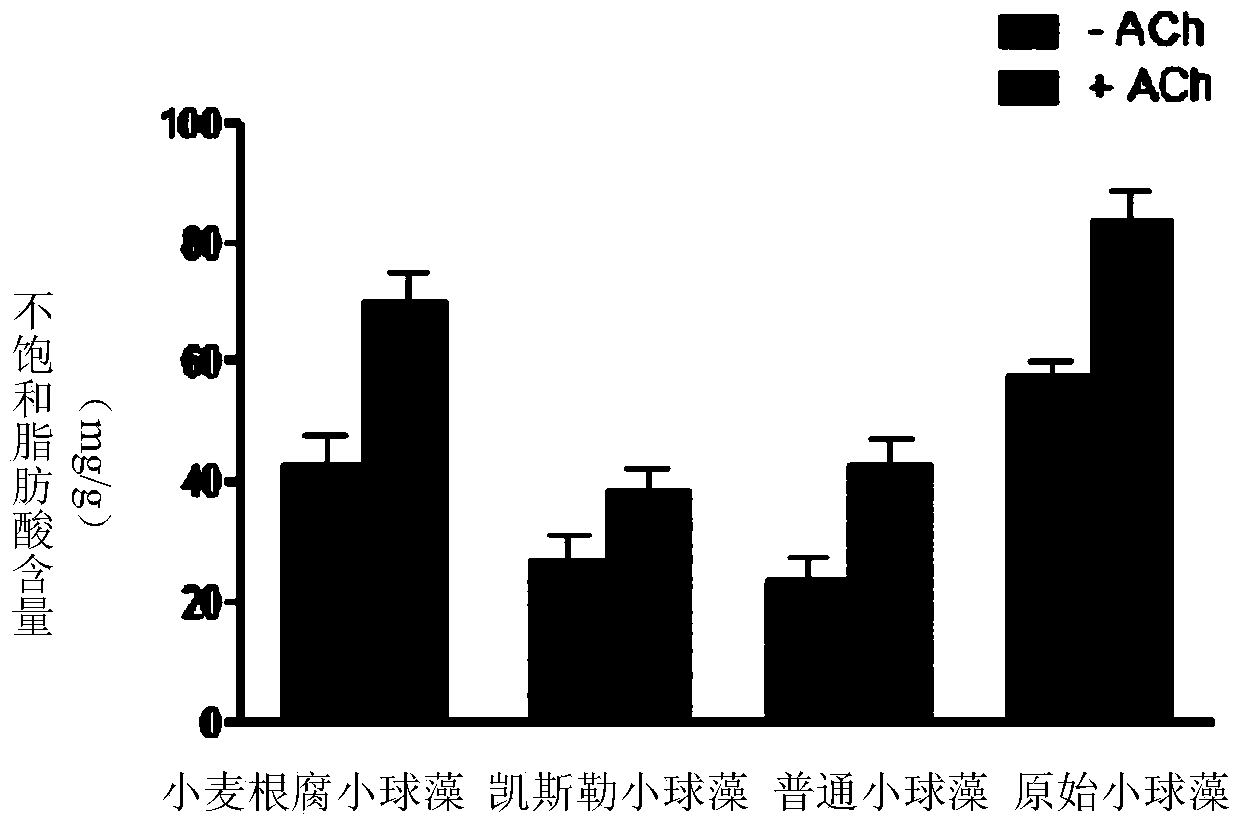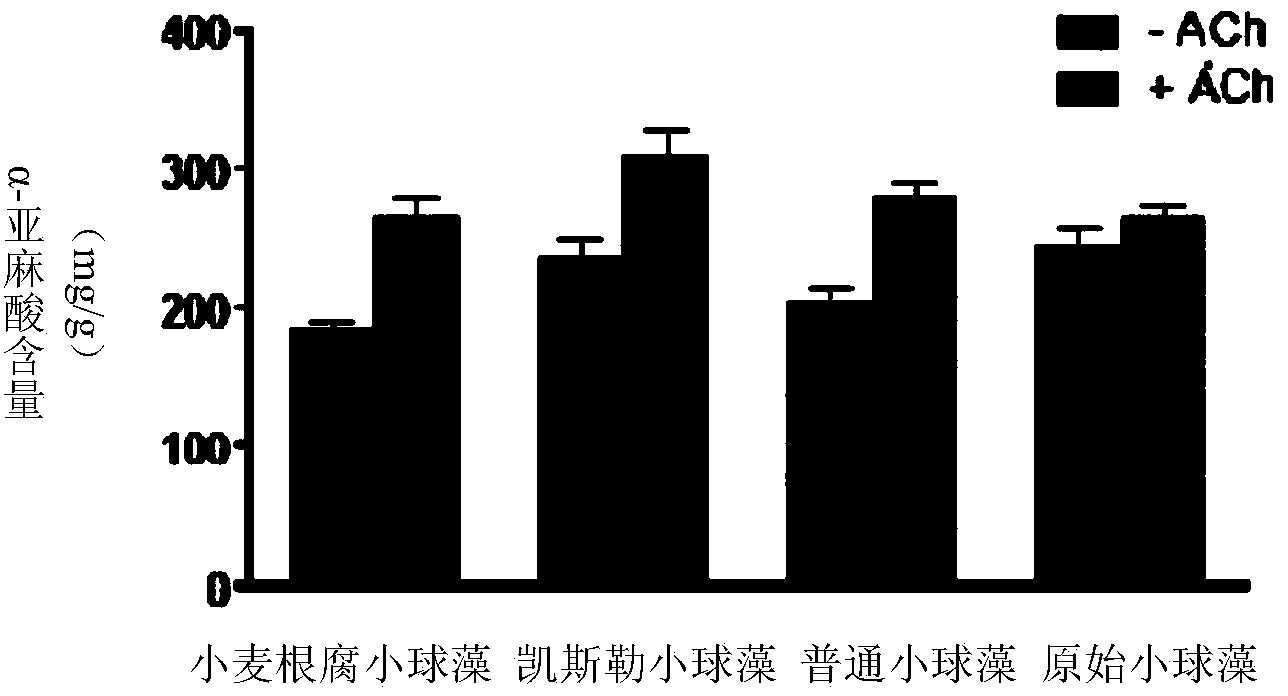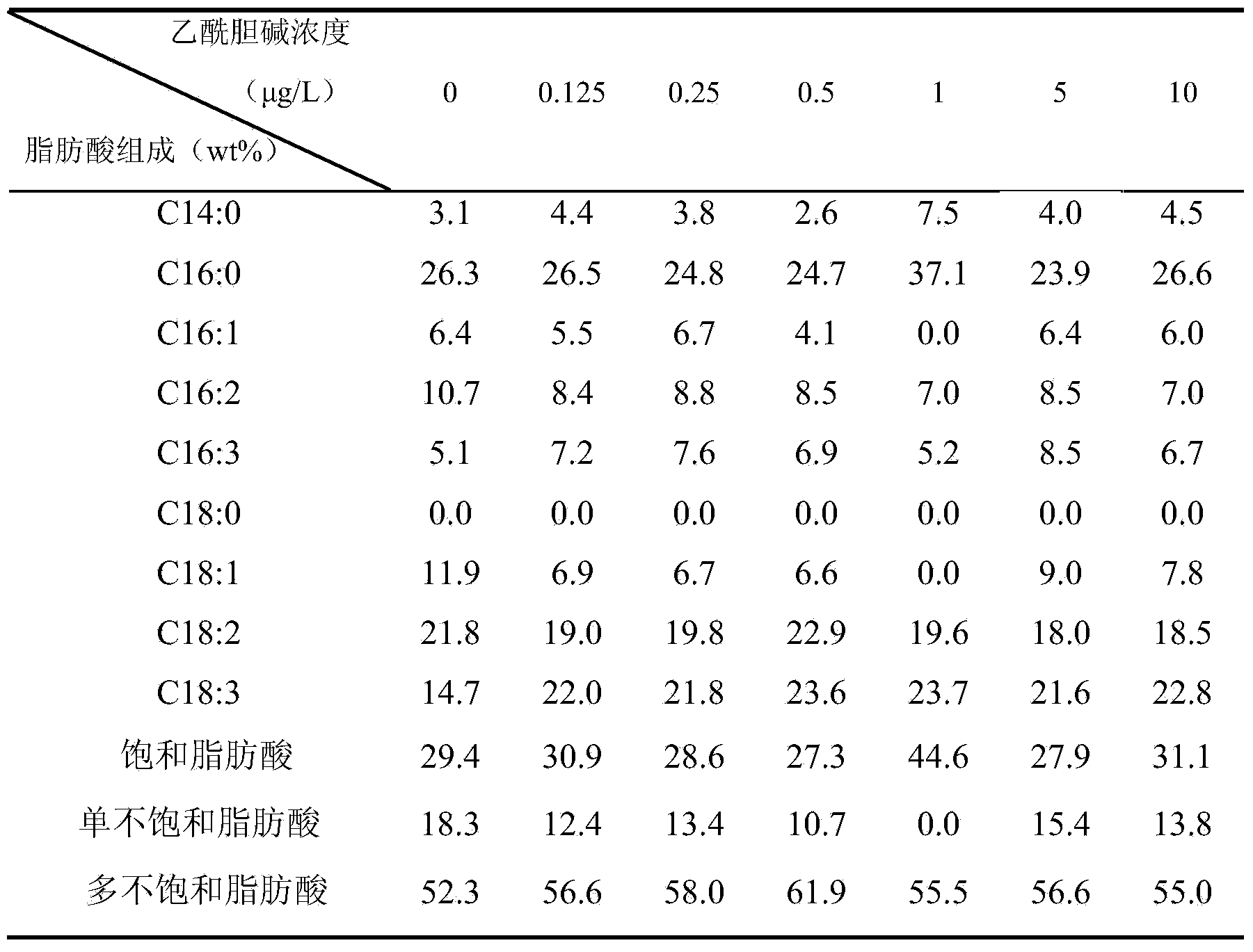Application of acetyl choline in improving accumulation of microalgae polyunsaturated fatty acids and alpha-linolenic acid
A technology of acetylcholine and linolenic acid, which is applied in the application field of acetylcholine in increasing the accumulation of polyunsaturated fatty acids and α-linolenic acid in microalgae, can solve the problems of shortage of supply and competition for land, and achieve the effect of promoting the accumulation of polyunsaturated fatty acids
- Summary
- Abstract
- Description
- Claims
- Application Information
AI Technical Summary
Problems solved by technology
Method used
Image
Examples
Embodiment 1
[0047] Preparation of specific medium. In order to investigate the effect of neurotransmitter acetylcholine on polyunsaturated fatty acids in chlorella oil, especially α-linolenic acid, we configured specific medium by adding different concentrations of acetylcholine to basal Tap medium. The concentration of acetylcholine in the control medium was 0μg / L, 0.125μg / L, 0.25μg / L, 0.5μg / L, 1μg / L, 5μg / L, 10μg / L.
[0048] Inoculate fresh Chlorella (Chlorella is self-screened by the laboratory) with an inoculum amount of 5% volume fraction in each of the above-mentioned culture solutions, and cultivate it in a constant temperature light incubator at 25°C and 3000 lux until the stable period. Obtain algae. During the cultivation process, the algae liquid was taken every 24 hours, and the absorbance of the algae liquid was measured at 680 nm to obtain the growth curve of Chlorella.
[0049] The above-mentioned algae liquid is centrifugally concentrated, washed with deionized water, and ...
Embodiment 2
[0054] Tested in a similar manner to Example 1, except that the neurotransmitter acetylcholine was not added at the initial stage of cultivation, and the concentrations of 0 μg / L, 0.125 μg / L, 0.25 μg / L, 0.5 μg / Except for acetylcholine of L, 1 μg / L, 5 μg / L, and 10 μg / L, other parameters remained unchanged.
[0055] Table 2 shows the effects of different concentrations of acetylcholine on the fatty acid composition of Chlorella's growth log phase. The results show that compared with the control group (the concentration of acetylcholine is 0 μg / L), adding acetylcholine in the logarithmic phase of Chlorella growth can increase the content of polyunsaturated fatty acids, especially α-linolenic acid in Chlorella oil to a certain extent , but the increase was slightly lower than that of adding different concentrations of acetylcholine during the adjustment period of Chlorella growth. With the increase of acetylcholine concentration, the content of polyunsaturated fatty acids, espec...
Embodiment 3
[0060] The test was carried out in a similar manner to Example 1, except that the neurotransmitter acetylcholine was not added at the initial stage of culture, and the concentrations of 0 μg / L, 0.125 μg / L, 0.25 μg / L, and 0.5 μg / L were added after culturing to the stationary phase of microalgae growth. , 1 μg / L, 5 μg / L, and 10 μg / L of acetylcholine, other parameters remained unchanged.
[0061] Table 3 The effect of different concentrations of acetylcholine on the fatty acid composition of Chlorella's oil during the stable growth period
[0062]
[0063] Table 3 shows the effects of adding different concentrations of acetylcholine on the fatty acid composition of chlorella during the stable growth period. The results showed that compared with the control group (the concentration of acetylcholine was 0 μg / L), adding acetylcholine in the stable growth period of chlorella could increase the content of polyunsaturated fatty acids, especially α-linolenic acid, in chlorella oil to...
PUM
 Login to View More
Login to View More Abstract
Description
Claims
Application Information
 Login to View More
Login to View More - R&D
- Intellectual Property
- Life Sciences
- Materials
- Tech Scout
- Unparalleled Data Quality
- Higher Quality Content
- 60% Fewer Hallucinations
Browse by: Latest US Patents, China's latest patents, Technical Efficacy Thesaurus, Application Domain, Technology Topic, Popular Technical Reports.
© 2025 PatSnap. All rights reserved.Legal|Privacy policy|Modern Slavery Act Transparency Statement|Sitemap|About US| Contact US: help@patsnap.com



